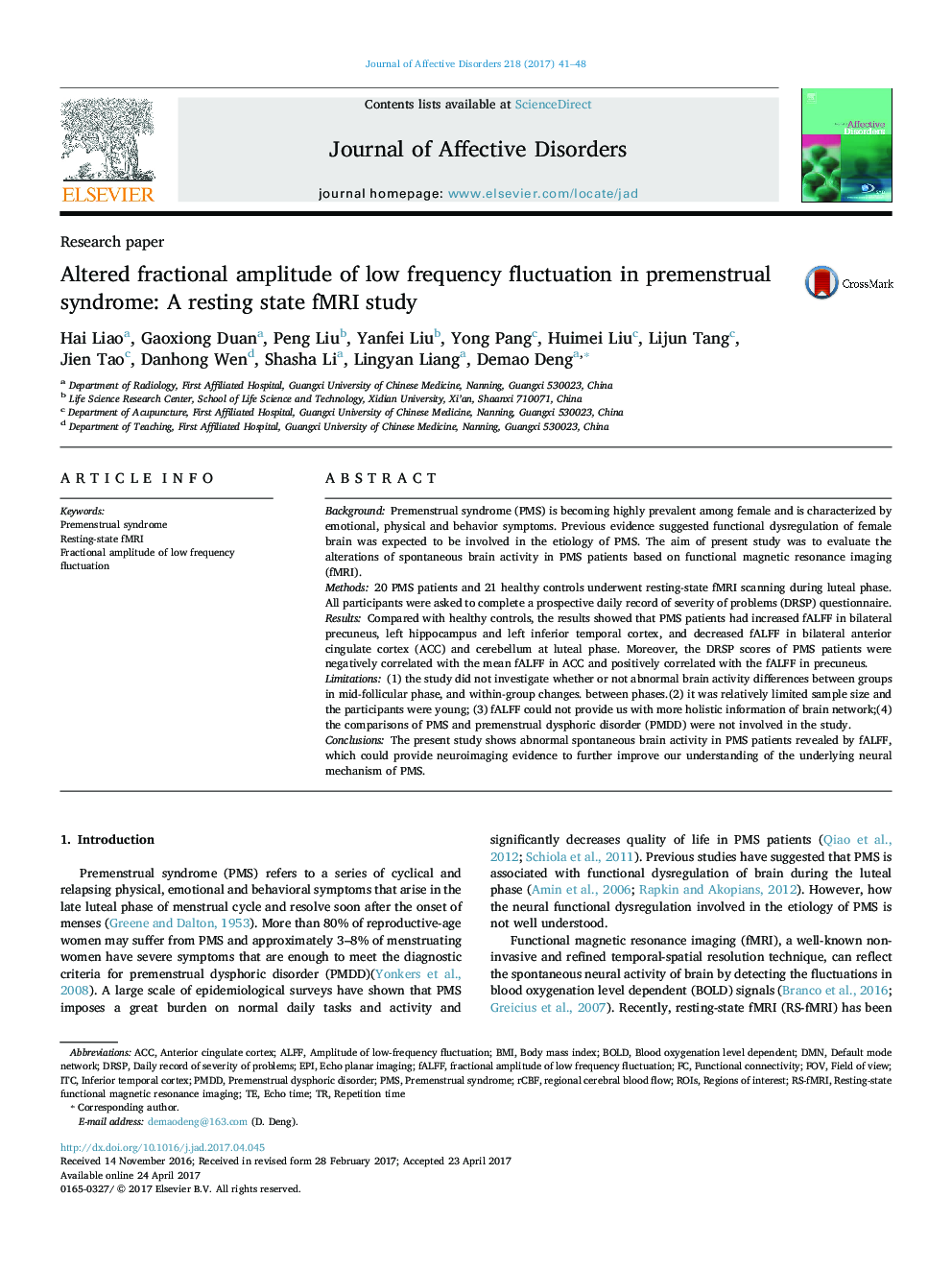| Article ID | Journal | Published Year | Pages | File Type |
|---|---|---|---|---|
| 5721929 | Journal of Affective Disorders | 2017 | 8 Pages |
â¢A resting-state fMRI technique was applied to explore the etiology of PMS.â¢The fALFF method was used to detect brain activity in premenstrual syndrome.â¢Abnormal spontaneous brain activity was found in patients with premenstrual syndrome.
BackgroundPremenstrual syndrome (PMS) is becoming highly prevalent among female and is characterized by emotional, physical and behavior symptoms. Previous evidence suggested functional dysregulation of female brain was expected to be involved in the etiology of PMS. The aim of present study was to evaluate the alterations of spontaneous brain activity in PMS patients based on functional magnetic resonance imaging (fMRI).Methods20 PMS patients and 21 healthy controls underwent resting-state fMRI scanning during luteal phase. All participants were asked to complete a prospective daily record of severity of problems (DRSP) questionnaire.ResultsCompared with healthy controls, the results showed that PMS patients had increased fALFF in bilateral precuneus, left hippocampus and left inferior temporal cortex, and decreased fALFF in bilateral anterior cingulate cortex (ACC) and cerebellum at luteal phase. Moreover, the DRSP scores of PMS patients were negatively correlated with the mean fALFF in ACC and positively correlated with the fALFF in precuneus.Limitations(1) the study did not investigate whether or not abnormal brain activity differences between groups in mid-follicular phase, and within-group changes. between phases.(2) it was relatively limited sample size and the participants were young; (3) fALFF could not provide us with more holistic information of brain network;(4) the comparisons of PMS and premenstrual dysphoric disorder (PMDD) were not involved in the study.ConclusionsThe present study shows abnormal spontaneous brain activity in PMS patients revealed by fALFF, which could provide neuroimaging evidence to further improve our understanding of the underlying neural mechanism of PMS.
